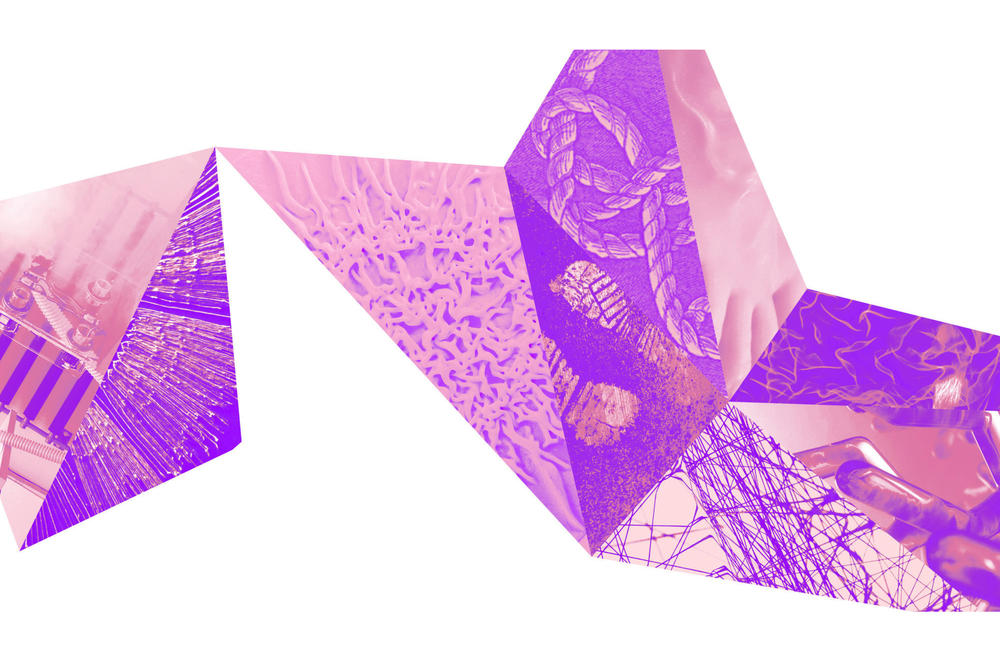Matters of Activity. Image Space Material
A new culture of material
The cluster “Matters of Activity” aims to develop new design strategies for materials and structures.
The Matters of Activity cluster aims to establish the foundation for a new material culture. The project’s central vision is to develop images, spaces, and materials as active structures of a new physical and symbolic reality, in which nature and culture intertwine in a novel way. In this context, interdisciplinary research and development of sustainable processes and structures is a key priority in all areas of visual-material character, such as wearables, materials technology, medical technology, logistics, architecture, and robotics. More than 40 disciplines are systematically investigating design strategies for materials and structures that adapt to specific requirements and the environment. The cluster relies on a new role for design within the context of growing diversity and the continuous improvement of materials and forms of visualization in all disciplines.
Prof. Dr. phil. Wolfgang Schäffner is the spokesperson for the "Matters of Activity" Cluster.
Image Credit: Matthias Heyde
Understanding images as dynamic processes controlling activities, e.g. in surgical scenarios, and spaces and materials being active structures adapting to tasks and environments, is essential for the development of future techniques and artifacts. The phenomena to be investigated include traditional processes, such as filtering, weaving, and cutting. In the digital age, these enable the generation of new forms of dynamic and active materiality and will fundamentally change our culture.
The inseparable linking of active images, spaces, and materials demands an interdisciplinary approach, in which the humanities and natural sciences as well as the design disciplines link experimental and design approaches with historical analysis to draw practical and theoretical consequences.
The Matters of Activity cluster connects the heritage of more than 200 years of Humboldt-Universität zu Berlin and 100 years of Bauhaus.
“The Matters of Activity cluster connects the heritage of more than 200 years of Humboldt-Universität zu Berlin and 100 years of Bauhaus in a dynamic interdisciplinary laboratory,” says Wolfgang Schäffner, Professor of the Cultural History of Knowledge and spokesperson for the cluster. “We are confident that the analog will play a new major role in fundamental research in the digital age, both in interdisciplinary research on the activity of materials and in material information processing.” The new cluster builds on the Cluster of Excellence Image Knowledge Gestaltung launched in 2012, which has systematically established interdisciplinary structures. Moreover, research and teaching will get a public platform in the open Humboldt Laboratory of Humboldt-Universität zu Berlin in the Humboldt Forum enabling direct interaction with the public through innovative exhibition and publication formats. The extensive interdisciplinary support of early career researchers and cooperation with a wide variety of institutions from the fields of culture, business, and research will also stimulate a long-term dialog between fundamental research and society.
Spokesperson: Prof. Dr. Wolfgang Schäffner Applicant university: Humboldt-Universität zu Berlin Cooperation partners: Directly involved institutions:- Charité Berlin
- Freie Universität Berlin
- HTW Hochschule für Technik und Wirtschaft Berlin
- Kunstgewerbemuseum Berlin
- MPI für Kolloid- und Grenzflächenforschung Potsdam
- Technische Universität Berlin
- Weißensee Kunsthochschule Berlin
- Bard Graduate Center, New York
- Bundesanstalt für Materialforschung und –prüfung, Berlin
- École nationale supérieure des Arts Décoratifs, Paris
- Universidad de Buenos Aires
- Universidade de São Paulo
- Wyss Institute / Harvard University


